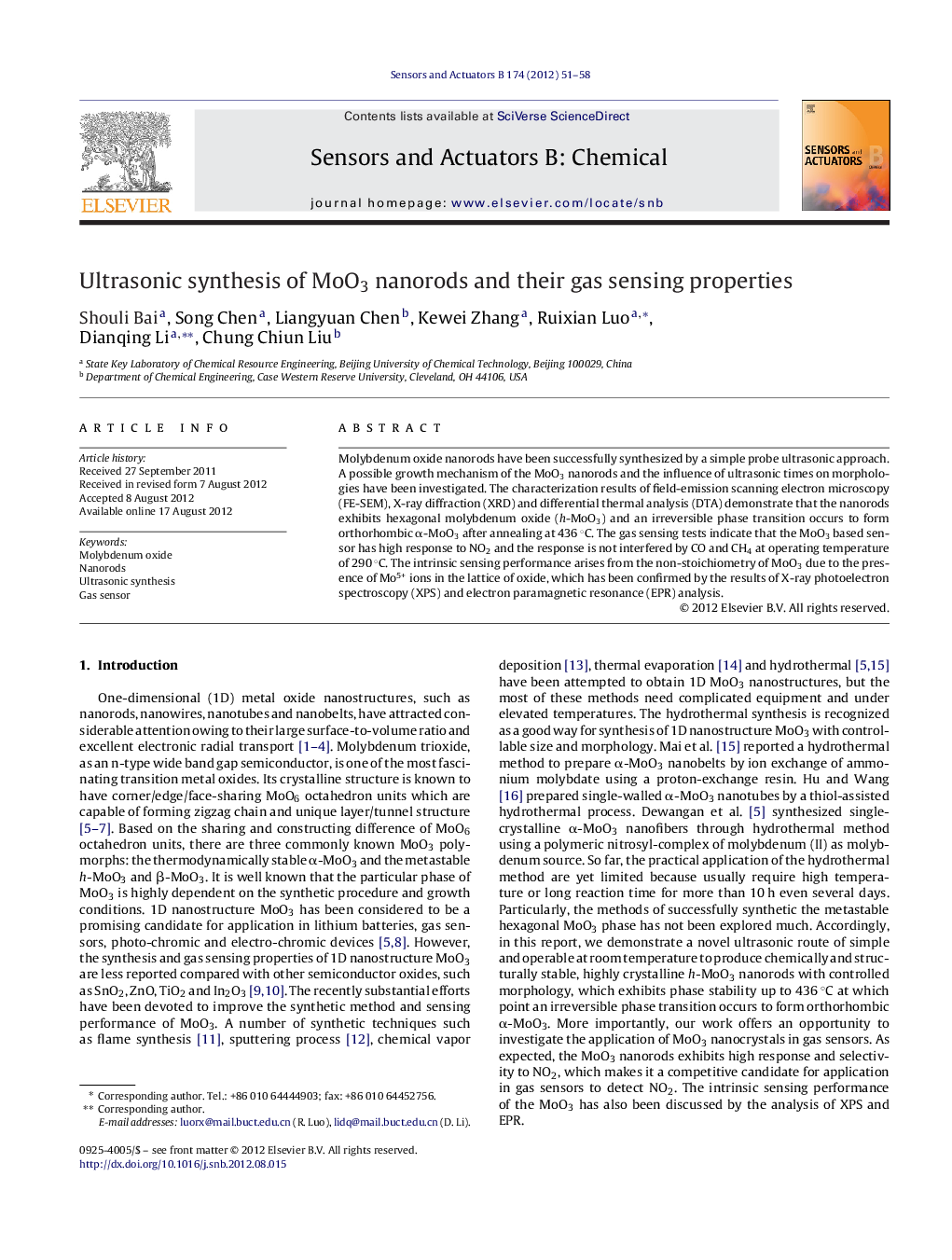| Article ID | Journal | Published Year | Pages | File Type |
|---|---|---|---|---|
| 743294 | Sensors and Actuators B: Chemical | 2012 | 8 Pages |
Molybdenum oxide nanorods have been successfully synthesized by a simple probe ultrasonic approach. A possible growth mechanism of the MoO3 nanorods and the influence of ultrasonic times on morphologies have been investigated. The characterization results of field-emission scanning electron microscopy (FE-SEM), X-ray diffraction (XRD) and differential thermal analysis (DTA) demonstrate that the nanorods exhibits hexagonal molybdenum oxide (h-MoO3) and an irreversible phase transition occurs to form orthorhombic α-MoO3 after annealing at 436 °C. The gas sensing tests indicate that the MoO3 based sensor has high response to NO2 and the response is not interfered by CO and CH4 at operating temperature of 290 °C. The intrinsic sensing performance arises from the non-stoichiometry of MoO3 due to the presence of Mo5+ ions in the lattice of oxide, which has been confirmed by the results of X-ray photoelectron spectroscopy (XPS) and electron paramagnetic resonance (EPR) analysis.
